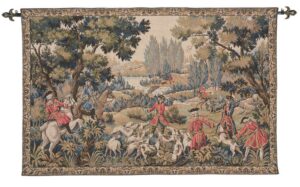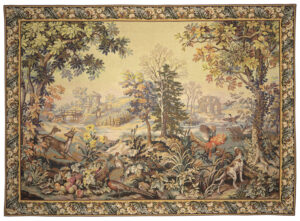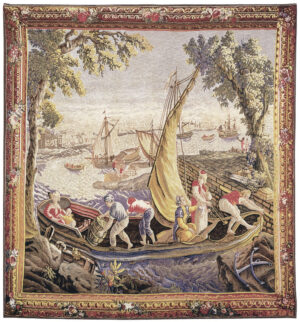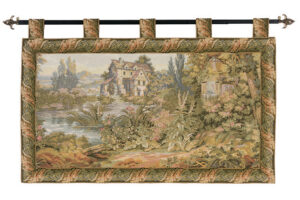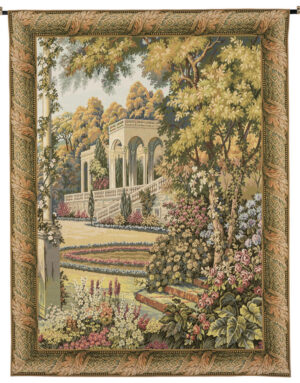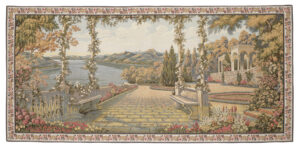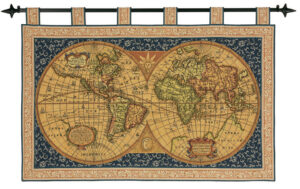In the 18th Century many tapestry designs were produced that resembled the style of paintings from this period. The subjects which were commissioned were often landscapes or pastoral scenes, usually with more realistic perspective than the traditional verdures of an earlier period. Maritime scenes were popular subjects with the Flemish weavers, fishing and trading being the main activities of the northern ports. The themes of tapestries produced in Flanders often portrayed scenes from daily life, and represented an attempt to compete with the French pastoral scenes.
These tapestries are high quality, with the emphasis on recreating the atmosphere and visual impact of the classic masterpieces. Based on a weaving method invented in 1804, loom-woven tapestries are produced on Jacquard looms, involving the interweaving of warp and weft yarns of different colours to create the design. The setting up and control of the looms is a highly skilled and delicate operation requiring much attention to detail. Both types are ideal investment and heirloom pieces, which are major talking points in any house or office. Due to the nature of tapestry fabric, nobility and scholars throughout history have collected and preserved these works of art. Now you can see these works of art in palaces and museums throughout the world. Or you can own a piece of history and culture to savour and preserve for yourself.
Here are most of history’s finest tapestries reproduced for you. Each tapestry comes in different sizes as detailed in the enlargements. These works of art are the finest made in the world. We hope you enjoy them as much as we do.

